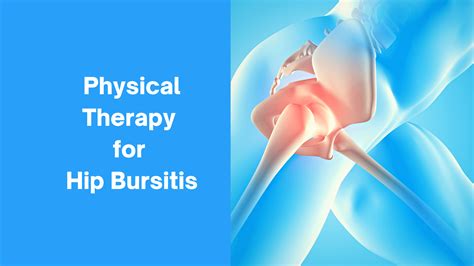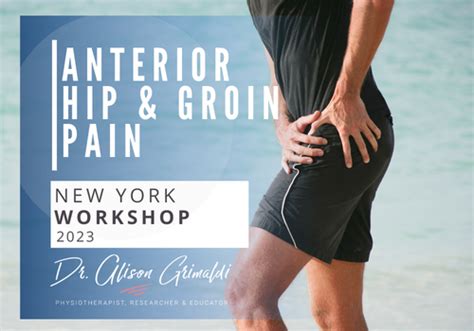Intro
Discover 7 effective ways to treat bursitis hip, including exercises, stretches, and pain relief methods, to alleviate hip bursitis symptoms, reduce inflammation, and promote healing for a speedy recovery from hip joint pain and bursa inflammation.
The hip is a complex joint that is prone to various injuries and conditions, one of which is bursitis. Bursitis is an inflammation of the fluid-filled sacs, known as bursae, that cushion the bones, tendons, and muscles near the joints. When the bursae in the hip become inflamed, it can cause pain, swelling, and limited mobility. Treating bursitis of the hip is crucial to alleviate symptoms, promote healing, and prevent future occurrences. In this article, we will explore the different ways to treat bursitis of the hip.
Bursitis can be caused by a variety of factors, including repetitive motion, direct blows to the hip, or conditions such as arthritis. The symptoms of bursitis can vary from person to person, but common complaints include pain, swelling, and redness in the affected area. If left untreated, bursitis can lead to further complications, such as chronic pain, limited mobility, and increased risk of falls. Therefore, it is essential to seek medical attention if symptoms persist or worsen over time.
The treatment of bursitis depends on the severity of the condition, as well as the individual's overall health. Mild cases of bursitis may be treated with self-care measures, while more severe cases may require medical intervention. In some cases, a combination of treatments may be necessary to achieve optimal results. By understanding the different treatment options available, individuals can take a proactive approach to managing their bursitis and promoting healing.
Treatment Options for Bursitis of the Hip

Treatment for bursitis of the hip typically involves a combination of self-care measures, physical therapy, and medical interventions. The goal of treatment is to reduce inflammation, alleviate pain, and promote healing. Some common treatment options for bursitis of the hip include:
Rest, Ice, Compression, and Elevation (RICE)
The RICE principle is a common self-care approach for treating bursitis. Resting the affected area, applying ice to reduce inflammation, compressing the area with a bandage, and elevating the hip above the level of the heart can help alleviate symptoms. This approach can be particularly effective for mild cases of bursitis.Physical Therapy for Bursitis

Physical therapy can play a crucial role in the treatment of bursitis. A physical therapist can help individuals develop a personalized exercise program to improve range of motion, strength, and flexibility. This can help reduce pain, improve mobility, and prevent future occurrences of bursitis. Some common physical therapy exercises for bursitis include:
- Stretching exercises to improve flexibility
- Strengthening exercises to improve muscle strength
- Mobility exercises to improve range of motion
Medications for Bursitis
In some cases, medications may be prescribed to help manage symptoms of bursitis. Over-the-counter pain relievers, such as ibuprofen or acetaminophen, can help reduce pain and inflammation. In more severe cases, prescription medications, such as corticosteroids, may be necessary to reduce inflammation and promote healing.Alternative Therapies for Bursitis

Alternative therapies, such as acupuncture, massage, and chiropractic care, may also be effective in treating bursitis. These therapies can help reduce pain, improve mobility, and promote healing. Some individuals may find that alternative therapies provide relief from symptoms when traditional treatments have failed.
Surgical Options for Bursitis
In severe cases of bursitis, surgical intervention may be necessary. Surgical options, such as bursectomy or hip replacement, may be considered if other treatments have failed to provide relief. However, surgery is typically reserved for cases where the bursitis is causing significant pain, limited mobility, or other complications.Preventing Future Occurrences of Bursitis

Preventing future occurrences of bursitis is crucial to maintaining optimal hip health. Some ways to prevent bursitis include:
- Maintaining a healthy weight to reduce pressure on the hip joint
- Engaging in regular exercise to improve strength and flexibility
- Avoiding repetitive motions that can irritate the bursae
- Wearing proper footwear to reduce pressure on the hip joint
Home Remedies for Bursitis
Home remedies, such as applying heat or cold packs, using foam rollers, or taking over-the-counter pain relievers, can also be effective in managing symptoms of bursitis. However, it is essential to consult with a healthcare professional before attempting any home remedies, as some may exacerbate the condition.Conclusion and Next Steps

In conclusion, treating bursitis of the hip requires a comprehensive approach that incorporates self-care measures, physical therapy, medical interventions, and alternative therapies. By understanding the different treatment options available, individuals can take a proactive approach to managing their bursitis and promoting healing. If symptoms persist or worsen over time, it is essential to consult with a healthcare professional to determine the best course of treatment.
We invite you to share your experiences with bursitis or ask questions about the treatment options discussed in this article. Please comment below or share this article with others who may be experiencing similar symptoms. By working together, we can promote optimal hip health and reduce the risk of future complications.
What are the common causes of bursitis of the hip?
+Bursitis of the hip can be caused by repetitive motion, direct blows to the hip, or conditions such as arthritis.
What are the symptoms of bursitis of the hip?
+The symptoms of bursitis of the hip include pain, swelling, and redness in the affected area, as well as limited mobility and stiffness.
How can I prevent future occurrences of bursitis?
+Preventing future occurrences of bursitis can be achieved by maintaining a healthy weight, engaging in regular exercise, avoiding repetitive motions, and wearing proper footwear.
